
Sydney Opera House Pre-Vision
Saving plotting time in one of the world's busiest venues
Text:/ Bruce Ramus
Back in October 2008, I was contacted by Toby Sewell, the Head of Lighting at the Sydney Opera House, to provide ‘design mentor’ services with a view to upgrading the level of technical and design skills of his staff in hope that this would translate into better looking productions and a consistently higher level of design and operation for the many performances that come through the venue on a weekly basis.
Sydney Opera House has seven performance spaces and is one of the busiest performing arts venues in the world, hosting a vast array of performances, from ballet and opera, to theatre and rock and roll. Even circus spectacles and film premieres, make their way to Bennelong Point. To achieve a consistently high standard of lighting for this wide range of shows requires preparation that, with such a full schedule, is often impossible. Limitations of budgets, lack of space for training and programming results in very little opportunity for the growth of the departments’ abilities to adequately meet the needs of the incoming productions, let alone have the time to implement new technologies or ideas.

HI VIZ
One of the ways I sought to address this was by researching and installing a Pre-visualisation (PreViz) suite inside the Opera House. I felt that this would give the Opera House staff the time and space to develop design ideas outside of the pressured environment of the venue, and begin to learn how to program all the different technologies available. I imagined it would allow the designer/operator to get performance lighting to a state whereby he/she could address the subtleties of lighting, rather than spending the precious time getting back to square one with the positional focuses and palette creation each time a show began. So I started the research by looking for precedents in similar venues around the world, and began to see an emerging pattern. Radio City Music Hall in New York, the Royal Opera House at Covent Garden, London, and the Victorian Arts Centre in Melbourne had all seen the benefits of using a virtual lighting system.
As George Panait of the ROH in Covent Garden wrote in ‘Live Design’:
So, why light opera virtually? The answer is simple when you look at all the advantages. Time saving is a huge one… Saving labor costs, of course, is another immense benefit, as you don’t waste time on stage focusing the moving light rig with 40 technicians hanging around waiting with only the lighting board operator and the lighting designer working. I think using Pre-Viz also fuels creativity, as lighting designers can have most of the rig focused and spend more time concentrating on the design side of the lighting concept.”

FULL SHEBANG
I knew Sydney Opera House would require not only the hardware and software to create an extremely fast and expandable Pre-Viz system, but also the training to get it immediately operational and an ongoing maintenance contract to ensure future technical updates, support, and refresher training courses.
So I contacted Tom Thompson at Prelite, a San Francisco-based company that specialises in pre-visualisation systems. I enjoyed a great experience touring with Tom (with U2 in 1997 on the <Popmart> tour), and, having pre-programmed the many U2 tours I’ve been involved with, had a decent working knowledge of the various Pre-Viz systems. Tom has been involved in this niche of the industry since 1998, setting up Pre-Viz environments for live concert tours, theatrical productions, architectural installations and corporate events. Prelite had just completed a permanent system installation in Radio City Music Hall in New York, so it was also aware of the challenges faced by large institutions. Prelites’ motto, ‘a calm, relaxed environment with all of the comforts of home, all the tools of the office and none of the pressures of the show site… we make time’, seemed precisely what was required for the frantic schedule of Sydney Opera House.
SYSTEM SPECS
Once we were convinced of the value of such a system, Tom helped guide us to the appropriate system, at the heart of which was the NRG Storm i7 (3.2GHz Intel Core i7 overclocked up to 4.0GHz, 6GB DDR3 1600MHz RAM) computer, loaded with the two fastest video graphics card available at the time, the NVidia GTX 295s. This machine was primarily used in gaming environments, and the graphics speed and processor power were going to be essential in effectively dealing with the quick render times needed to produce realistic visuals, not only for lights but also for displaying sets and video content. We matched this with a Canopus TwinPact100 capture card, and the most recent software from Vectorworks (to draw the plots), Autodesk 3DS Max (to draw and optimise the sets) and ESP Vision (to provide the Pre-Visualisation). As Tom points out, “The system they have there is the fastest we have seen, partly because all of the components are new, and partly because they are serious about doing it ‘right’. There were no corners cut in constructing their system – it’s built for the long-haul.”

SPRINGER INTO ACTION
We enlisted the help of the very talented CAD department at Sydney Opera House to virtually construct the two main theatres, the Concert Hall and the Opera Theatre, which they did in record time. And, in due course, Tom travelled to Sydney to train five staff members on the Vision software and associated CAD programs. Then, the day the training was complete, we began to test it by programming offline the award-winning Jerry Springer: The Opera which opened on April 21. This controversial opera, based on the TV talk show host, opened in London in 2003 and made its Carnegie Hall debut last year, but here in Australia, had a limited scope and timeframe to mount the production, so the Pre-Viz was invaluable.
It performed really well and enabled us to pre-program a complicated production with more than 400 cues in under three days. This allowed the show to be produced in a very tight timeframe and look like we’d spent weeks rehearsing. Without the Pre-Viz system expectations for the production would have to have been reduced considerably.
Sewell was pleased with; “how the palettes and cues came back even with the slightly different trim heights between the ideal (Pre-Viz) and the real (the venue). With a narrow window of four days from bump in to opening night, pre-plotting was the only way to realise a complex music show with such limited venue time.”
More recently, the Sydney Opera House lighting department used the Pre-Viz system to pre-plot for Brian Eno’s Luminous Festival using a purpose-built standard rig in the Opera Theatre. Using five Sydney Opera House programmers who created vastly different shows for international artists such as Battles, Pivot, Ladytron, Lee Scratch Perry, Rachid Taha , Seun Kuti & Egypt 80, Jon Hassel & Maarifa Street and Damien Dempsey.
VISUALISING SOMETHING GREATER
The new Pre-Viz room is part of major technical, architectural and educational upgrades planned for Sydney Opera House through 2013. “The immediate future involves an upgrade of the basic infrastructure,” Sewell reports, “from installation of a DMX-over-Ethernet network in every venue to the purchase of new consoles in five main venues (plus spare), a new moving-light rig, venue-specific luminaires and new dimming systems in all venues.”
The Pre-Viz suite at the Sydney Opera House is a great first step on the road to integrating and modernising the technical departments. It’s growing into a lively design space where students of all ages and levels of expertise can learn new ways to see. It’s exciting, and to me, the future of lighting is becoming clearer. We’ve begun encouraging creativity and ideas, and that will equip our future light artists well.



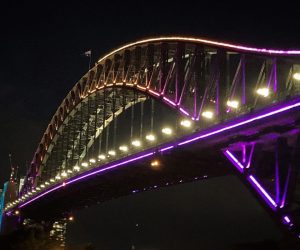



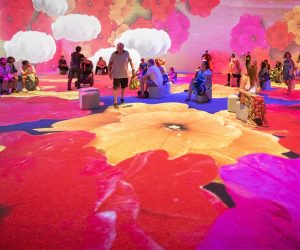

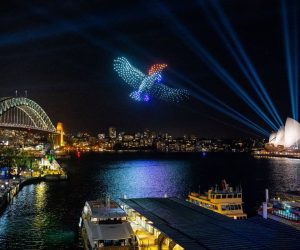

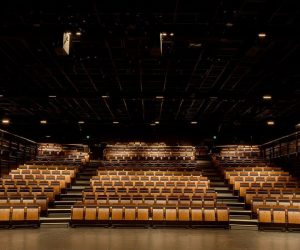
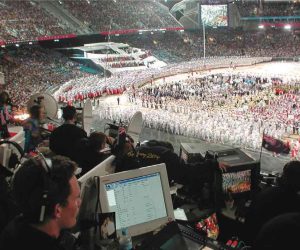


RESPONSES